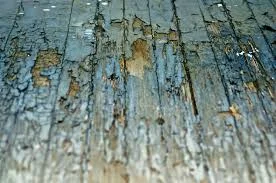Why were the Sixties so much fun? Could it be that we were all high on lead? Sure there was acid and grass and purple hearts, but what really got everyone loose as a goose was the lead. There is no level below which lead doesn’t have an effect. A little goes a long way. And it rots your brain, makes you prone to take risks and forgetful, while eating away at your kidneys and your liver. Kids get it worst: adults store it in their bones, but kids have it circulating in their bloodstream.
In the 60s A Day In The Life would start with a pot of tea made from water that had been sitting in lead pipes all night long. All the time you’re inhaling house dust that contains particles of lead that have flaked off the walls, painted with lead-based paints. Then the paper hits the doormat and you read it, the lead in the print coming off as a greyish smudge on your fingers that is absorbed directly through the skin into the bloodstream. Then breakfast of baked beans on toast, from a tin that was soldered together at the seam with a lead/tin compound. Out on the street, take a deep breath of fresh air, nicely spiced with airborne lead from the tetraethyl lead that was in all petrol until the mid ‘90s. Then roast pheasant for lunch, with atomised lead particles from the shotgun that brought it down. Now lead’s been phased out – you can only get unleaded petrol, lead pipes have mostly been replaced with plastic or copper, newspapers no longer use lead-based ink, house paints are all lead-free and tinned foods now no longer use solder – all the cans are welded seams. When I first went to pack Whole Earth baked beans back in 1983 the canners were appalled that I was appalled at the lead solder on the cans. They warned me that having welded seam cans would cost me an extra 10p per dozen, expecting me to drop my resistance. We were the first baked beans to use lead-free cans but Heinz and the rest followed suit over the next decade. Or so. And swan populations are recovering as hunters and fishermen switch over to lead-free shot.
Of course there is still lead residue in the world’s soils in which we grow our food. Green & Black’s test every batch of cocoa beans to make sure there is no residue. Dagoba, in the US, had to recall all their chocolate 2 years ago when it was found to have high levels of lead residue. It broke the company and they sold to Hershey a few months later.
When General Motors and Standard Oil developed tetraethyl lead as a petrol additive in the 1920s there was an outcry. It was banned. Everyone knew it was a poison and the opposition was led by top professors from Harvard and Yale. But Standard Oil likened lead to a ‘Gift from God’ as it would make such a difference to automobile performance. They acted in cahoots with DuPont (“Better Living Through Chemistry”) and General Motors to put pressure on the politicians. The ban on leaded gasoline was lifted and the world got a lot more toxic. Then it was banned again in the 1980s. Rick Nevin, of the National Center for Healthy Housing, has shown that crime levels fall when unleaded petrol is introduced. All the claims of tough guy mayors and police chiefs to have cut crime rates are so much fluff, the real culprit was lead all along. Has lead been phased out around the world? No. In Mexico City cars pump 32 tons of lead into the atmosphere every day. The crime rate went up by 69 % from 2005 to 2009. Researchers said maybe it was criminals acting under the influence of drugs. I blame the lead
But all is not doom and gloom – it only took 60 years for common sense to prevail, so there’s hope for us all that it might do so again with our modern poisons.











